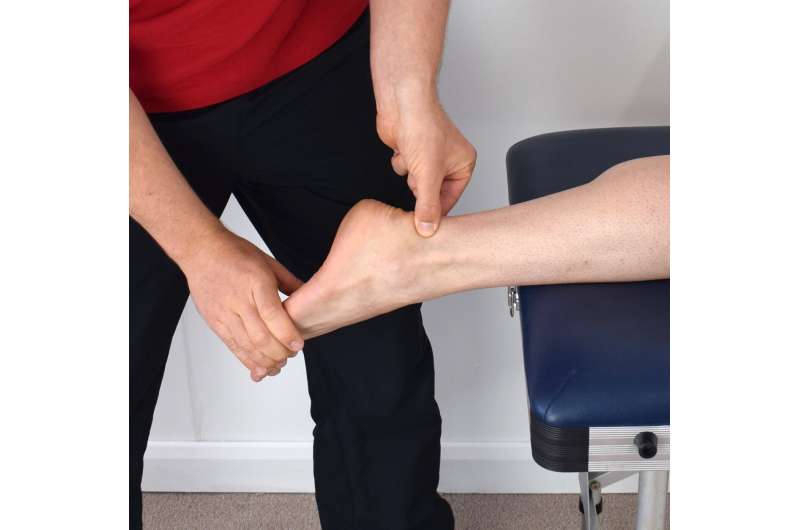Q&A: Common calf muscle injuries in runners over 40

I am a 50-year-old man who enjoys running. I have completed several half-marathons and began training for longer distances. A few months ago, I tore my calf muscle. I went to physical therapy, and all seemed to heal well. However, last weekend while running, I felt a strain in my calf. Is there anything I can do, or will I have to give up running? I was really looking forward to completing a marathon this coming spring.
ANSWER: Your situation is common, especially for runners of your age. You probably will not have to give up running, and with some precautions, you can get to 26.2 miles by next year. That said, you may need to ease up a bit and give your body more time to heal. Additional physical therapy can be helpful as you work through that process.
Calf muscle injuries are among the most common for runners over 40, particularly men. This type of soft tissue injury can heal, but it is going to take time. For younger runners, recovering from a calf muscle injury usually takes about six to eight weeks. At 50, however, you have lost some flexibility and elasticity in your soft tissue. That means recovery is going to take longer—possibly 12 weeks or more.
Taking it slow is key to a successful recovery. If you are having considerable difficulty with walking or putting pressure on the leg initially, seeing a sports medicine specialist can be helpful in deciding how much rest you need or if using a boot will be beneficial to allow the soft tissues to heal. If you are able to walk pain-free, a return to running progression may be advised with some limitations. A general recommendation for returning from this kind of injury is to start at just 15 minutes of running every other day and stay at that level for one week. If you are able to do that without pain, in the second week, move up to 20 minutes of running every other day. Once you can comfortably achieve that, add another five minutes to your runs each week. At that time, you also can add one more day to your weekly running schedule. If at any point you feel discomfort or pain, take your running down to the previous level you were able to achieve without pain. Recognize that even when you are completely healed, you may not be able to run as far or as fast as you once did.
As you work on returning to running, you also may want to incorporate cross-training into your exercise routine to help you stay fit without raising your risk of another injury. Swimming, an elliptical trainer or a stationary bike, or outdoor biking can provide quality workouts. Seeing a sports medicine or rehabilitation specialist early after an injury can be helpful in developing an individualized recovery plan for your progression back from these injuries while continuing to stay active.
It also may be valuable, especially if you have developed similar injuries in the past, to see a physical therapist for additional evaluation and therapy. He or she can provide guidance on exercises that may be useful for strengthening your calf muscle, such as eccentric exercises that focus on lengthening contractions in the muscle. An example of this type of exercise involves standing on a step with your heels hanging over the edge, and then slowly lowering your heel down, so you control the descent of your leg with the calf muscles. The physical therapist can provide some guidance for how much cross-training and time you should spend to maximize your recovery.
You may want to consider undergoing a runner's evaluation, too. This is a specialized assessment that occurs while you run on a treadmill. As you run, a physical therapist or sports medicine specialist watches your gait for signs of biomechanical issues that could raise your risk for injury. Identifying and correcting those issues could reduce your risk of future injuries.
Another step you can take to help prevent additional injury is to ensure you always incorporate a dynamic warm-up and stretch thoroughly before you start running. It can be as simple as taking a few minutes to walk before you run. A warm-up allows for more blood flow to your muscles, making them more elastic and less likely to strain.
If running is a priority for you, using a slow, measured approach with guidance from a physical therapist is the best method for recovering from this type of injury and reducing your risk of it happening again. It will take some time, but with discipline and patience, you likely will be able to enjoy running again.
2022 Mayo Clinic News Network.
Distributed by Tribune Content Agency, LLC.




















